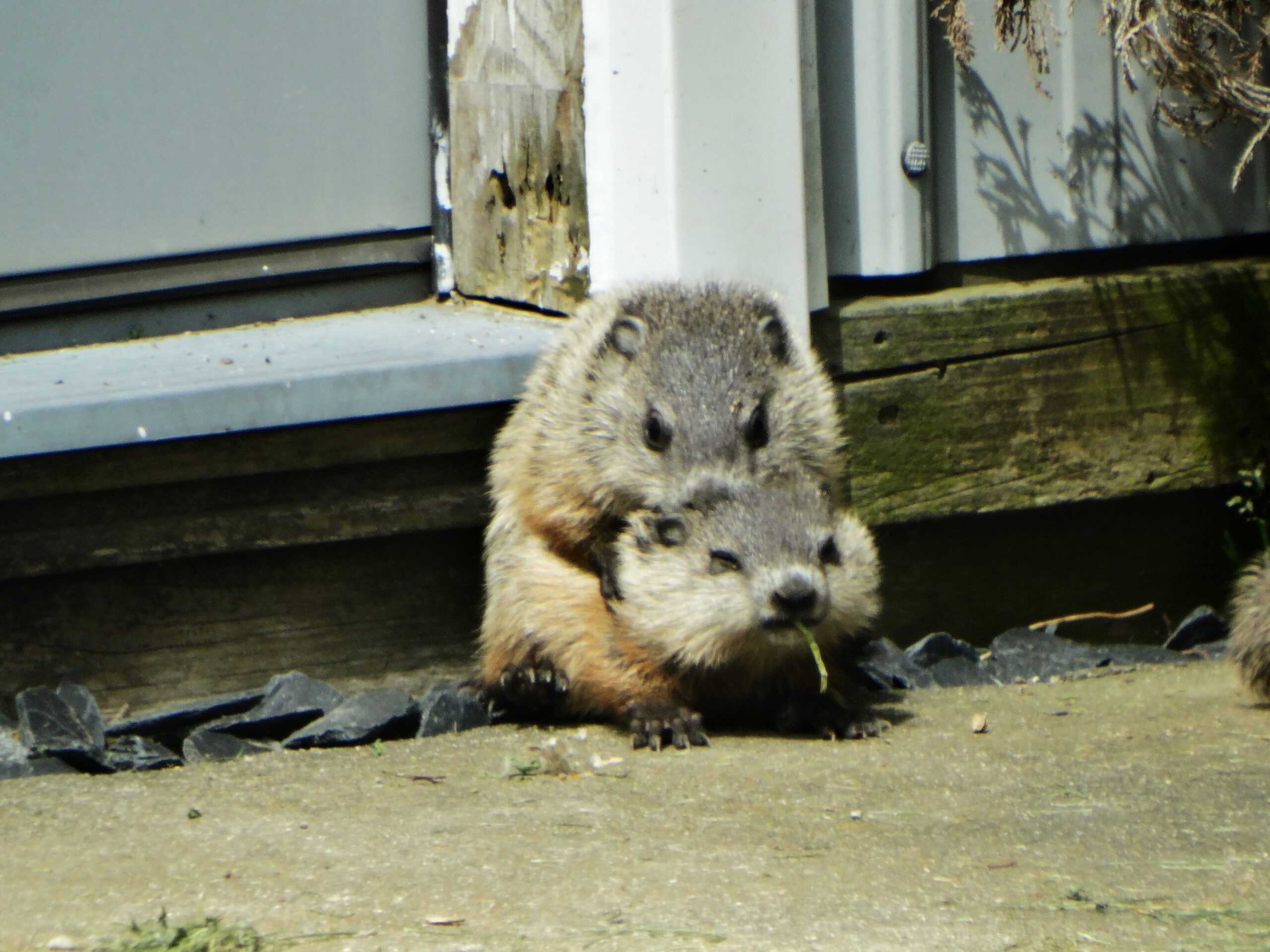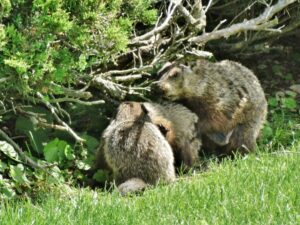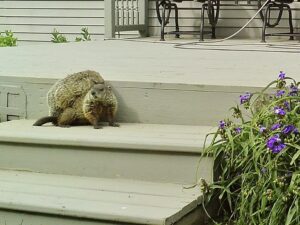Welcome to Woodchuck Wonderland
About That Behavior
2025 Update
Back in 2016, Joe and I published our thoughts about our groundhog observations from 2003-2016 on my old website in a paper titled “About That Behavior”.
Playful Mounting Behavior
Following are excerpts from that 2016 paper about the male groundhog. “It has been thought that the father does not assist in caring for the young because he is not needed.” We proceeded to describe male groundhogs who were documented around the burrow entrance after babies were born and who marked objects in the barn and surrounding the natal burrow.
We wrote “We have been saying for years that the male groundhog does not sever ties to his mate when babies are born. We have shown presence of the male in both video and photographs. We have also captured video of males interacting with juveniles…While the female may do the majority of training, increasing observations indicate a role here as well for the male.” We wrote that “once the female has given birth, the role of the male changes. In addition to visits to his mate, he makes rounds to other burrows which will be used for training of the babies after they emerge.”
In 2022, we published a professional manuscript to my website titled “Backyard observations of the behavior and role of the male woodchuck (Marmota monax)”1 We wrote “In our seventh year observing Woodchucks, we first witnessed and recorded a male named George playing with a pup. Initial concerns that George was attacking the pup turned to relief when both proceeded to forage peacefully in the yard together. Since then, we have documented several other males interacting with the young.” We interpret these interactions as mostly playful.
“Anthony, M. (1962)2 observed adults sometimes attacking the young and described one incident in mid-August of an adult mauling a juvenile.” In over 20 years of observing, we have never seen an adult maul a juvenile. We did witness a fight between yearling Whiteface and father Gregory in which visible facial injuries occurred.
In our 2016 paper, we stated we had seen the same male and female mated in more than one year. While we said it’s possible that groundhogs mate for life, assuming the survival of each, we also acknowledged that both male and female may have additional mates. Our observations continue to provide support for these circumstances.
In 2016 we also addressed behaviors such as mounting and chasing which we believe have often been misunderstood and misrepresented. While mounting is seen in mating behavior, it is also seen in play between siblings, adults, as well as juveniles and adults (male and female). So it is not to be assumed that groundhog mounting behavior necessarily equals copulation. Chasing is another activity that may be misinterpreted as hostile. “Only on a few occasions have we observed a chase that was clearly meant to run off another chuck.” This was true from 2003-2016 and continues to be true. Adult females chase their mates, adults chase young, siblings chase each other. Chases may be disciplinary, playful, aggressive, to establish dominance and for exercise and training. It is typical behavior between chucks.
Something not in our 2016 paper is the issue of togetherness of groundhog mothers and their offspring. While we absolutely want to see a baby groundhog in need get help, it should not be assumed that seeing a baby by itself means it needs help. Similar to a deer mother, groundhog mothers will leave their offspring while they go off to forage. Keep a close watch for the the mother to return to the burrow area. Males may provide help to weaned chucklings.
Susan Sam & Joseph Sam 2025
1 Backyard observations of the behavior and role of the male woodchuck (Marmota monax) Copyright 2022, Susan C. Sam and Joseph M. Sam
2 Anthony, M. 1962. Activity and behavior of the woodchuck in southern Illinois


